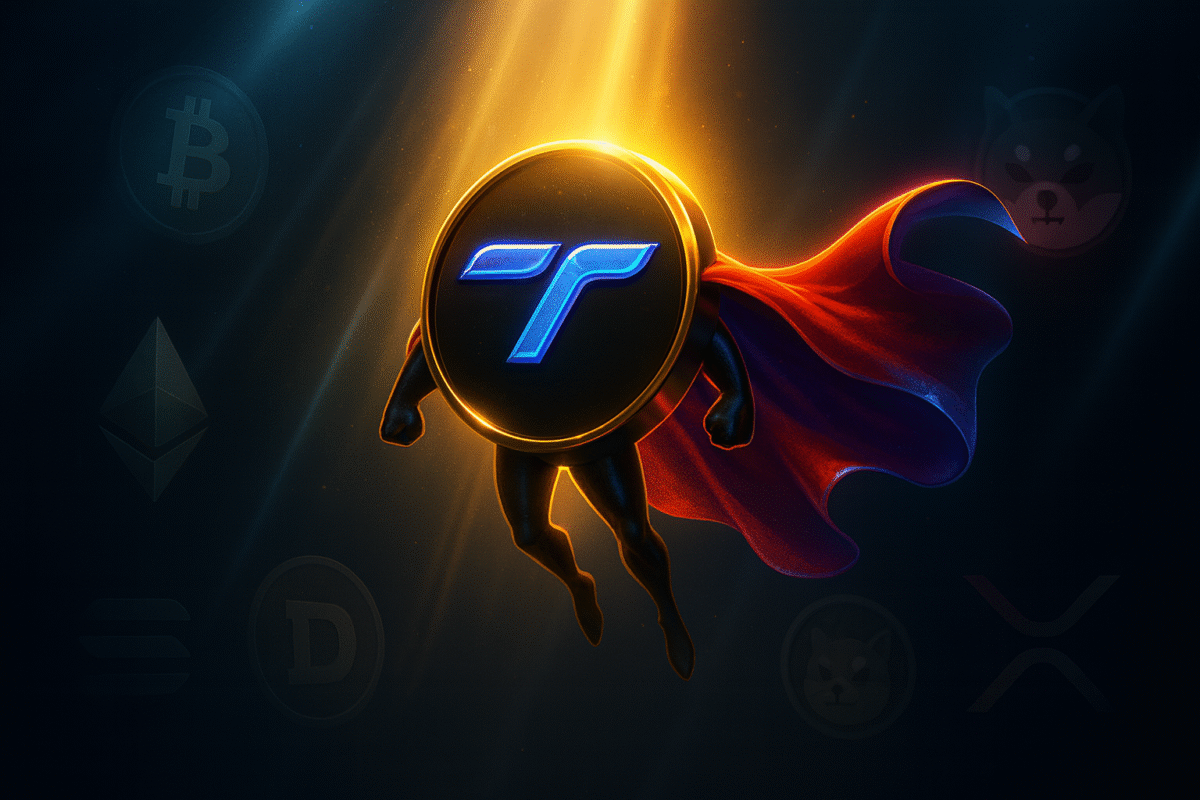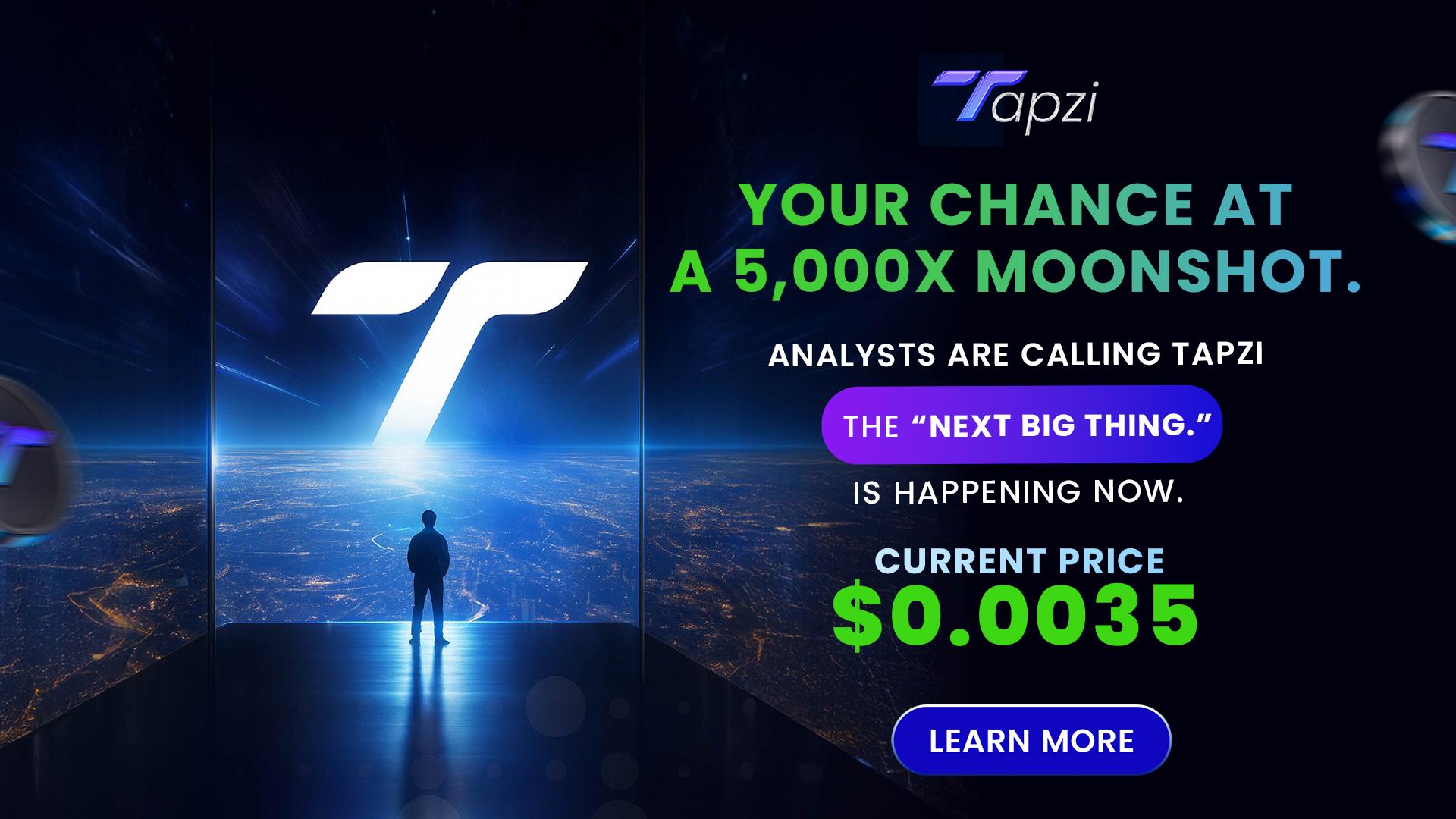The crypto market continues to evolve at a rapid pace, and 2025 is shaping up to be a decisive year for several emerging projects. Among the most closely followed are Pi Network (PI), World Liberty Financial (WLFI), and Tapzi, a new entrant in Web3 gaming.
Each offers a unique value proposition, ranging from protocol upgrades and token burns to building sustainable ecosystems. As adoption accelerates, investors are searching for tokens that not only capture market attention but also deliver long-term utility.
Pi Network Upgrade Builds Momentum Toward Mainnet
Pi Network has once again made headlines with its latest protocol upgrade, marking a significant step toward its long-awaited Mainnet launch. The update, known as version 20, focuses on strengthening the underlying blockchain structure. Dr Altcoin argues that such technical milestones provide a clear signal of the project’s long-term commitment.
For the community, this progress is not merely symbolic. With millions of users worldwide, Pi Network represents one of the largest enclosed crypto ecosystems in the market today. While the project initially gained traction with its mobile-first mining model, recent developments show it is moving toward mainstream recognition.
Notably, a billion-dollar asset manager recently launched the first Pi Network ETP, underscoring growing institutional interest. This shift from retail hype to financial products shows that Pi may be approaching a turning point. However, investors remain focused on whether utility and adoption will follow once the Mainnet becomes active.
At the time of writing, Pi Network (PI) trades at $0.373, with a daily volume of nearly $70 million. The token has gained 5.42% in 24 hours and 9.22% in the past week, pushing its market cap above $3 billion. These numbers highlight strong trading activity, but broader adoption will depend on Pi moving beyond its enclosed ecosystem.
WLFI Gains Traction With Buyback and Burn Plan
World Liberty Financial (WLFI), a Trump-backed project, is also attracting significant attention. After experiencing volatile trading patterns, the team announced a proposal to implement a continuous buyback-and-burn strategy. This plan involves channeling all liquidity fees into purchasing WLFI tokens from the market and permanently removing them from circulation.
The initiative received overwhelming support, with over 99% of governance votes in favor. By reducing the circulating supply, the project aims to create scarcity and potentially strengthen long-term value for token holders. Already, 47 million WLFI tokens have been burned from its total supply of 24.6 billion.
WLFI also benefits from strong liquidity, having secured listings on major exchanges like Binance, KuCoin, and Bitget. At launch, daily trading volume surpassed $580 million, supported heavily by investors from Asia and the Middle East. The association with the Trump brand has also amplified its visibility, particularly in regions where the name carries significant weight.
Beyond tokenomics, WLFI has expanded its ecosystem by launching USD1, a stablecoin built on Solana. This development strengthens its use case and may help the token gain more traction in DeFi applications.
As of press time, WLFI trades at $0.2092, with a 24-hour trading volume exceeding $480 million. It has risen 6.11% in the past day and 5.77% in the past week, giving it a market capitalization of $5.7 billion. For investors, the buyback-and-burn strategy could be a catalyst for further upward momentum.
Growing Web3 Gaming Opportunity
While Pi Network and WLFI showcase strong progress in infrastructure and token economics, Tapzi is entering the market with a disruptive approach to Web3 gaming. The gaming industry, projected to surpass $400 billion by 2028, represents a massive opportunity for blockchain integration. Within this space, Web3 gaming is expected to grow fivefold by 2032, making it one of the fastest-growing sectors of the digital economy.
Yet, despite the potential, many existing GameFi projects face sustainability issues. Overreliance on luck-driven mechanics, rampant bot activity, and inflationary token models have eroded trust and engagement. Tapzi is aiming to solve these problems with a skill-based, transparent, and user-friendly model.
Tapzi Price and Tokenomics
Tapzi introduces the $TAPZI token, designed around a fixed supply of 5 billion tokens. Its presale price is $0.0035, with a planned launch price of $0.01. The presale has already kicked off, with structured vesting schedules in place to prevent inflationary pressure after launch.
Missed the Last 1000x? Tapzi Could Be Your Next Shot!
Token allocation includes 20% for presale, 20% for liquidity, 15% for the treasury, and 10% for the team, among others. With an initial market cap of $750,000, Tapzi positions itself as a lean, growth-oriented project designed to expand alongside user adoption.
Why Tapzi Stands Out
Tapzi is not just another GameFi experiment. Instead of random rewards or speculative emissions, players stake $TAPZI tokens to compete in real-time PvP games like Chess, Checkers, and Rock-Paper-Scissors. Winners claim rewards directly from opponent stakes, ensuring a self-sustaining model without treasury drains.
Additionally, Tapzi prioritizes accessibility. The platform enables web and mobile gameplay without downloads, offers gasless transactions, and provides a free-to-play mode to onboard casual gamers. This frictionless experience could appeal to the global base of over 1.5 billion mobile gamers.
For developers, Tapzi doubles as a launchpad. It offers SDKs and staking modules, allowing independent studios to publish new skill-based games within the ecosystem. This dual focus on players and developers creates a diversified pathway for growth.
Roadmap and Future Growth
Tapzi’s roadmap emphasizes product delivery and adoption. By the end of 2025, the platform expects to launch its beta with staking, prize pools, and its first global tournament. A mobile app and integrations with major gaming guilds are also on the agenda.
In 2026, the focus will shift toward NFT avatars, cosmetic upgrades, multilingual support, and Tier 1 exchange listings. By mid-2026, Tapzi plans to release a developer SDK, scalability upgrades, and cross-chain deployments, including Ethereum and Polygon. This progression positions Tapzi not only as a gaming platform but as a long-term decentralized gaming hub.
Conclusion: Best Crypto To Invest Today
Pi Network, WLFI, and Tapzi highlight the diversity of innovation in crypto as 2025 approaches. Pi is making steady progress toward Mainnet adoption, WLFI is tightening supply through buybacks, and Tapzi is building a sustainable Web3 gaming ecosystem. For investors, each project carries unique opportunities and risks. Pi’s success depends on delivering real-world adoption. WLFI must demonstrate that its burn strategy can sustain momentum. Tapzi, meanwhile, has the potential to capitalize on one of the fastest-growing industries in the digital economy.
Media Links:
Website: https://tapzi.io
Whitepaper: https://docs.tapzi.io
X Handle: https://x.com/Official_Tapzi
Disclaimer: This media platform provides the content of this article on an "as-is" basis, without any warranties or representations of any kind, express or implied. We assume no responsibility for any inaccuracies, errors, or omissions. We do not assume any responsibility or liability for the accuracy, content, images, videos, licenses, completeness, legality, or reliability of the information presented herein. Any concerns, complaints, or copyright issues related to this article should be directed to the content provider mentioned above.







